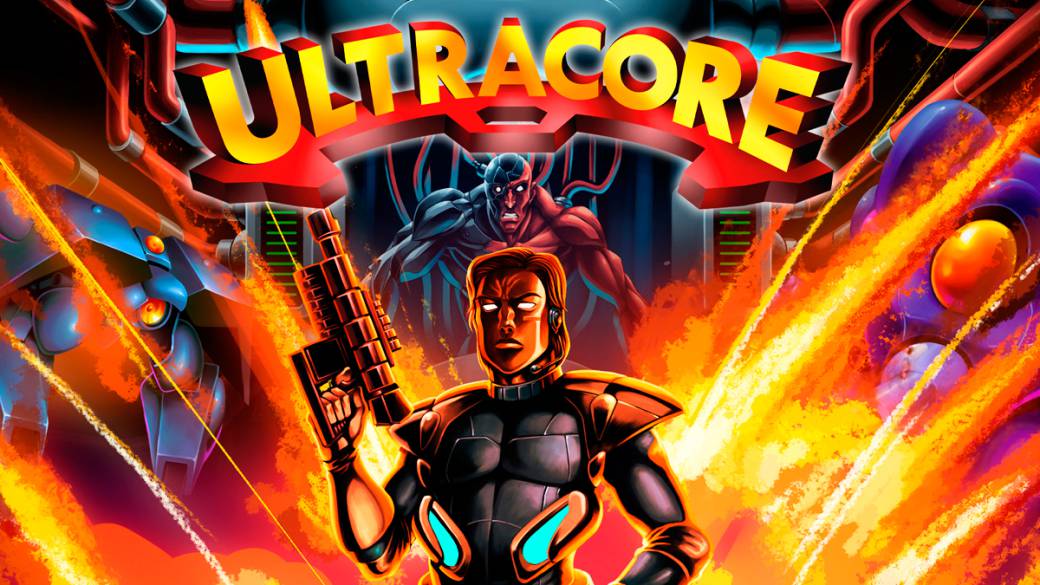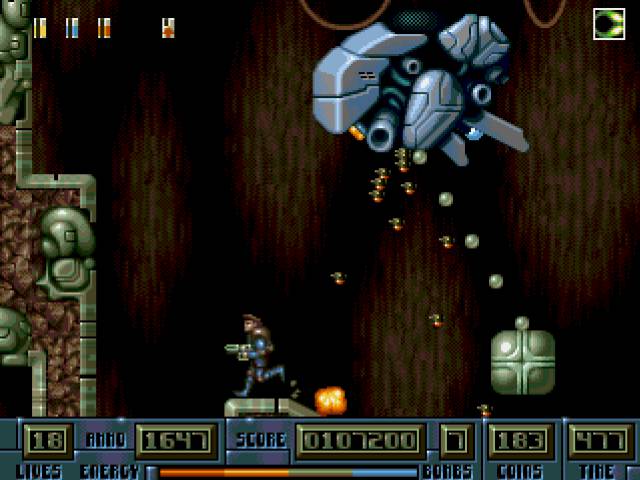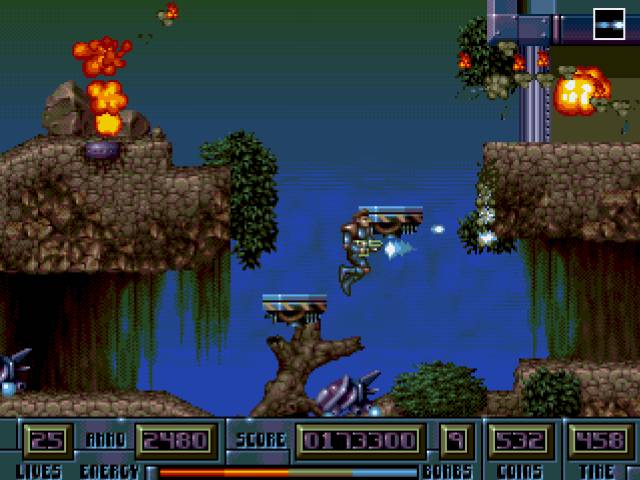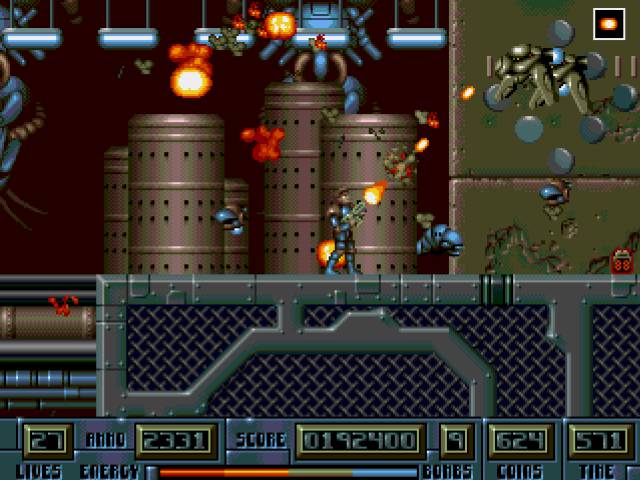
UltraCore is a canceled Mega Drive game that returns as designed. A living fossil reminiscent of games for the old Amiga
Although it is possible that no one took it as a real competition, there were developers in Europe in the early 90’s who did things well enough to compete for the throne with the great Japanese companies in their moments of inspiration. It was something that was seen especially on the Commodore Amiga computer (which was so successful in other European countries than ours), where a series of jewels arrived that in their time had the support of the press and the players of the time . Nobody remembers many study games like Psygnosis, The Bitmap Brothers or Factor 5 anymore, but the truth is that among them there are titles that still allow themselves to be enjoyed today, showing a much more European style in terms of design. In the old continent, he liked the idea of adorning the genres of a lifetime with what seemed to be one more step: keys, objects -which didn’t do much good-, shops that weren’t essential or jumps even more impossible than most of Japanese video games. Even so and despite its imperfections, titles such as Gods, Xenon 2, Leander, our Risky Woods or the Turrican saga still have followers today. Those who remember them with excitement should take a seat and prepare to enjoy the history of UltraCore.
A game for Mega Drive officially released … in 2020

The movie is not enough to laugh at. A video game in the style most typical of the Commodore Amiga designed by Digital Illusions (much later EA DICE) was 99% finished in 1994, apparently for Mega Drive, Mega CD and -how-not-Amiga. The then editor of the study, no less than the mythical Psygnosis who was in full adaptation to her new reality – read this as a hasty change to the polygonal – decided that this project had nothing to do in the market of those months, and possibly had reason. It must be remembered that we were at the time of the Super Nintendo turning the game around with Donkey Kong Country almost at the same time that the Ridge Racer polygons – to say the least – made it clear that everything was going to change forever. In the face of all these powerful rivals, a humble Run‘n Gun with European features clearly inspired by the Turrican saga was abandoned in a drawer. We would know very little about him for years to come: a couple of videos of his unfinished version, shared by some of its authors, are all we have seen of the game in many years.
It would be stupid and pretentious to now recall what video games have changed between 1994 and 2019. They are different worlds, but the reality is that that forgotten game in an old dusty trunk has been renamed UltraCore, and can be downloaded on the Playstation 4 itself and Nintendo Switch. What’s more, it can also be played on the Sega Mega Drive itself, all thanks to the efforts of the German company Strictly Limited Games. Although the game was a disaster, which is not the case, it is an impressive example of video game preservation, which we would like to see repeated with many other prototypes of which very few people know of its existence. UltraCore is, therefore, a game developed in 1994 that has been given few tweaks, which permeates its entire proposal and, obviously, becomes both its great virtue and its main limitation. On the one hand, it enjoys an authenticity that can put many players on their feet: that of a video game that we can play on both a Mega Drive and a Playstation 4 or Switch. On the other side, and this is its main misery as a current release, it cannot compete with current video games much more polished in its own genre, in which today there are infinitely more perfect offers such as Valfaris. In any case, we would do very badly by focusing on the latter: despite the reservations that anyone may have after those 26 years in the shade, UltraCore can be enjoyed today.
European, for good and bad.

It is possible that never until the trailer for this game has a label been coined like that of “Euro Style 2d Shooter”, but the truth is that it perfectly summarizes what we are going to find in UltraCore. What we have before us is a typical Run’n Gun in which the passion that its designers must have felt for Japanese video games can be guessed, but in this project they made all these characteristics that we previously highlighted from that ancient European tradition, used with great success . In UltraCore the levels are not linear, promoting an exploration that never becomes too complex, but it does contribute to a certain replayability that has surprised us for good. We are finding (or not) with coins and colored cards that we must enter into computers to unlock elevators; We look for levers that are used to open doors and hidden coins that we can then use in stores. The thing, therefore, is far from what would be the typical lateral sidescroller forward to the right, without becoming a very open video game in terms of development. Whoever knows them will find echoes of Turrican, Gods, Elf …
UltraCore is not bad at all in technical matters. Graphics and sound are at a pretty good level for the capabilities of a Mega Drive, with special mention for a chiptune soundtrack echoing echoes of the immortal Chris Huelsbeck. Without a doubt we are talking about a very solvent game in the system for which it was developed, but the truth is that we would not dare to put it at the level of games as audiovisually round as Mega Turrican, without a doubt the title with which the comparisons are / would have been more obvious, within the catalog of the thirty-year-old Sega. But the problems that can scare away a player today in UltraCore do not come from the technical section. Today we are very used to seeing games in neo-retro style, but it is precisely this custom that makes its edges so evident. Inconsistencies that could be understood in a 1994 game, but could well have been honed for a 2020 release.
Reborn, while stubborn.

It is difficult, when playing with UltraCore, to abstract from its incredible history. At no time can it be taken from our minds that what we have before us is a video game branded as a fossil at the time, which is reborn 25 years later at a time when the two-dimensional is once again cool – a turn of events that would make us ashamed to those who canceled it in 1994-. The most veteran player will surely have more complicity with the proposal, but almost all the good that UltraCore does as a shooting game is later diminished by the disastrousness of certain sections of platforms that, simply, are not well resolved. It is far from an impossible game, and in fact anyone who is familiar with the genre will complete it without too many headaches. The point is that there are unforgivable points in which we will lose lives just because, with special mention for some jumps of the second level in which it is easy to lose three or four lives without it ever having become clear to us if we are doing it right or wrong. . Without a doubt, it is a characteristic that many will remember in very mythical games of antiquity (without going any further, some of this happened in the first Megaman) and it may even have its grace contemplated with our eyes today, but we live in times with two-dimensional games. Too perfect to completely miss it, if we are going to play it on a Playstation 4. And it’s a shame because, if the game was 99% as its authors say, a version with a more just and intuitive platform would have been much more attractive to more players. Neither has it seemed to us that the addition of a control in twin stick mode adapts completely, since the game has enough peculiarities in this plot to add this extra component that is not relevant, however we can not use it. They are the only drawbacks of the most radical trip to the past among which we have been able to witness in this of the video game: a title that does not imitate 16-bit aesthetics, but is original from those times. A true survivor who bears witness to an era and who can be enjoyed shortly if we like this genre or want to relive that almost forgotten style of European video games for 16 Bit
THE BEST
- It’s a game for Mega Drive!
- A very solvent OST
- Some levels have seemed very inspired
WORST
- Some sectors of platforms ruin the experience
- Does not have a scanline filter
- The control in Twin Stick mode has not convinced us
CONCLUSION
UltraCore functions as today’s Run’n Gun, but above all as a reminder of a time when Europe was trying to stand up in video games with the same weapons that Japan dominated like no one else. An example of a way of developing video games that was left far behind, returns as a bizarre launch that will catch nostalgics of the old Mega Drive, but also video game sybarites who want to indulge in the sensation that really stands out in all its history: that of playing with a quality video game that has been forgotten for 26 years.
Okay
It meets the expectations of what is a good game, it has quality and does not have serious flaws, although it lacks elements that could have taken it to higher levels.
